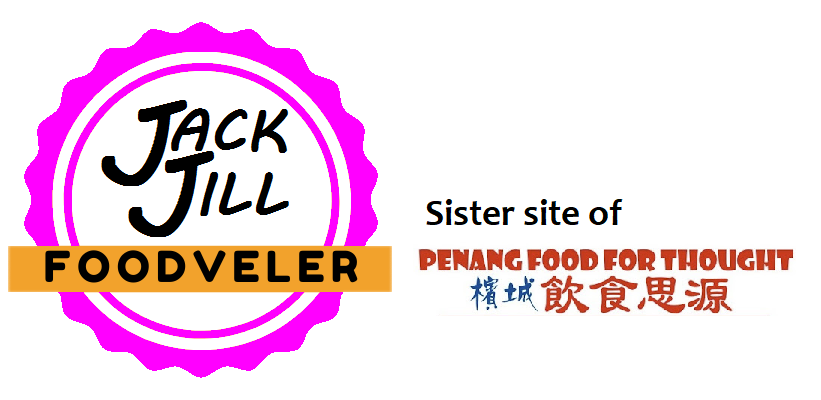For lunch today, my colleagues and I paid a visit to Ko.B.Q Korean BBQ Restaurant (코비큐) at Precinct 10. It has been a while since we last visited Precinct 10, therefore we were pleasantly surprised that parking is now free on weekdays before 7:00pm. I guess the parking charges earlier were driving many customers away.
Anyway, Ko.B.Q is operated by ethnic Koreans, so can expect a certain degree of authenticity in the cooking. Like many Korean restaurants, the waiting staff is very attentive and courteous.
Starting with the banchan (반찬) or side dishes, we find that Ko.B.Q scored several points early on. This Korean restaurant is one of the few where we find the banchan to be very impressive in terms of taste and variety. Unlike a number of Korean eateries lately, the banchan here can be refilled upon request.
The Fresh Salad consists of shredded cabbage, lettuce leaves, cherry tomatoes and salad cream. It is a certainly refreshing appetizer to begin the feast.
The most iconic banchan in any Korean cuisine is the undisputed kimchi cabbage. Made from napa cabbage, the kimchi is cool and juicy, and gives a tangy spicy sensation when chewed.
Similarly, the kimchi radishes are quite succulent and appetizing. The spicy flavor of radishes is stronger than napa cabbage due to the former’s larger sizes.
As for the bean sprouts, they are just normal in taste. I guess there is not much one can do to make bean sprouts taste better anyway.
The bean sprouts are quite delectable. Unlike the previous banchan, this one is flavored with spicy gochujang (고추장), which is fermented soybeans with chili pepper paste.
The banchan pageant is followed by some stewed potatoes.
By consensus, our favorite banchan are the fried eggs with spring onions. The texture is soft and smooth, making this dish a very gratifying experience!
The sausages with long beans and carrots are not too impressive. I wonder why Koreans even bother to use Western sausages in Korean cuisine?
Water spinach is also available as banchan. This is probably because someone mentioned that water spinach is cheap.
Our main highlight of the day is the Dak Galbi (닭갈비, RM65.00), a crowd-favorite dish among Koreans. This dish is cooked using a portable gas stove in front of our very own eyes. It consists of marinated diced chicken flavored with gochujang, garaetteok (가래떡) or Korean rice cakes, paengi beoseot (팽이버섯) or enoki mushrooms, potato strips, scallions (spring onions), onions, carrots and cabbage.
Quite honestly, we were expecting more chicken considering the price tag. Besides, this dish is meant to feed four persons.
The Garaetteok is not commonly in many Korean restaurants, but its appearance today is certainly welcomed. Using rice flour made into cylindrical shapes, the garaetteok is meant to be chewy once cooked. However, the thick size means that prolonged heating is required. Otherwise the rice cakes remain tough and starchy inside.
Also included is a very small serving of cooked instant noodles. For such cheap ingredients, why does Ko.B.Q not give a decent-sized serving for four persons?
I am not sure whether the Dak Galbi is meant to cooked by the waiters or by ourselves. Anyway, we decided to take matters in our own hands. With high heat from the gas stove and constant stirring, the dish is cooked in less than 15 minutes!
The marinated chicken is tender and flavorful in taste. It is not as spicy as we desired, but I think the savory flavors make up for it. Other ingredients such as garaetteok and cabbage serve to even out the flavor. In all, the taste of this Dak Galbi is commendable. However, we agreed that the portion is simply insufficient for four persons.
The Dak Galbi is served with a bowl of white rice for each of us. Like its Japanese counterparts, Korean cuisine usually uses short-grained rice instead of local Jasmine rice. Ironically, extra rice is chargeable even though banchan refills are not.
The Korean Fishcake Soup (오뎅탕, RM65.00) features several pieces of fishcakes on bamboo skewers. This dish is a type of odeng (오뎅), popular Korean street food which traces its roots to Japan.
The soup is flavored with enoki mushrooms, but we do not find the fishcakes to be tasty in any remote way. The taste is quite similar to what is found in typical steamboat restaurants.
In addition, we also tried the Kimchi Jeon (김치전, RM35.00), a pan-fried pancake made from kimchi and squid. The flour-and-egg batter is well done, and so it the use of squid which is delightful to the overall taste. The pancake is served with some soy sauce but I prefer to eat the pancake as it is.
Watermelon slices are served as desserts.
As for drinks, each of us had a cup of warm Korean Green Tea (녹차, RM5.00) served in tea bags. Hot water refills are available upon request.
Upon consultation with my fellow lunchmates, the jury has a returned this verdict: “The taste is reasonable especially the marinated chicken, banchan and pancake. However, the jury is of the opinion that the portions are inadequate considering the pricing.”



